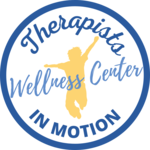Pediatric Speech Therapy in Fort Smith, AR
Does your child need pediatric speech therapy?
If you would like to speak to a professional or schedule an evaluation for pediatric speech therapy in Fort Smith, AR, contact us now.

What is an Orofacial Myofunctional Disorder (OMD)?
Examples of OMDs include one or a combination of the following:
- Thumb and finger sucking habits
- A routine habit of resting with the lips apart
- A forward resting posture of the tongue between or against the teeth
- Tongue Thrust
- Other harmful oral habits
OMDs are often related to, or can contribute to, a variety of dental disorders, including:
- Malocclusion (improper alignment of the teeth)
- Periodontal disorders
- Orthodontic relapse
- Changes associated with abnormal jaw growth and position
Comorbidities can also be present in clients who have OMDs:
- Airway Obstruction (ex . enlarged adenoids, or deviated septum)
- Changes associated with abnormal jaw growth and position
- Cleft Palate
- Down syndrome
- Dysphagia
- Sleep Apnea/Sleep-Disordered Breathing
- Temporomandibular Joint Disorder (TMJ)
- Tethered Oral Tissues (buccal, lip or tongue tie)
What is Orofacial Myofunctional Therapy (OMT)?
Treatment goals may include the following:
- Normalize tongue and lip resting postures
- Establish nasal breathing patterns
- Eliminate improper chewing and swallowing patterns
- Stabilize the dentition from extraneous orofacial muscle movement
- Address harmful oral habits including:
– Prolonged pacifier use
– Thumb and/or finger sucking
– Fingernail, cheek, or lip biting
– Tongue sucking
– Clenching or grinding of the teeth
Benefits of Orofacial Myofunctional Therapy may include:
- Correcting and improving tongue and lip postures which can aid in the development of normal patterns of dental eruption and alignment.
- Assisting in the stabilization of the teeth during and/or after orthodontic treatment or jaw surgery
- Identifying the need and referring for speech therapy to support the remediation of speech errors based on not only the acoustics of speech, but the oral placements as well.
- Supporting nasal breathing through the identification of airway obstruction, tethered oral tissues, and other structural anomalies.
